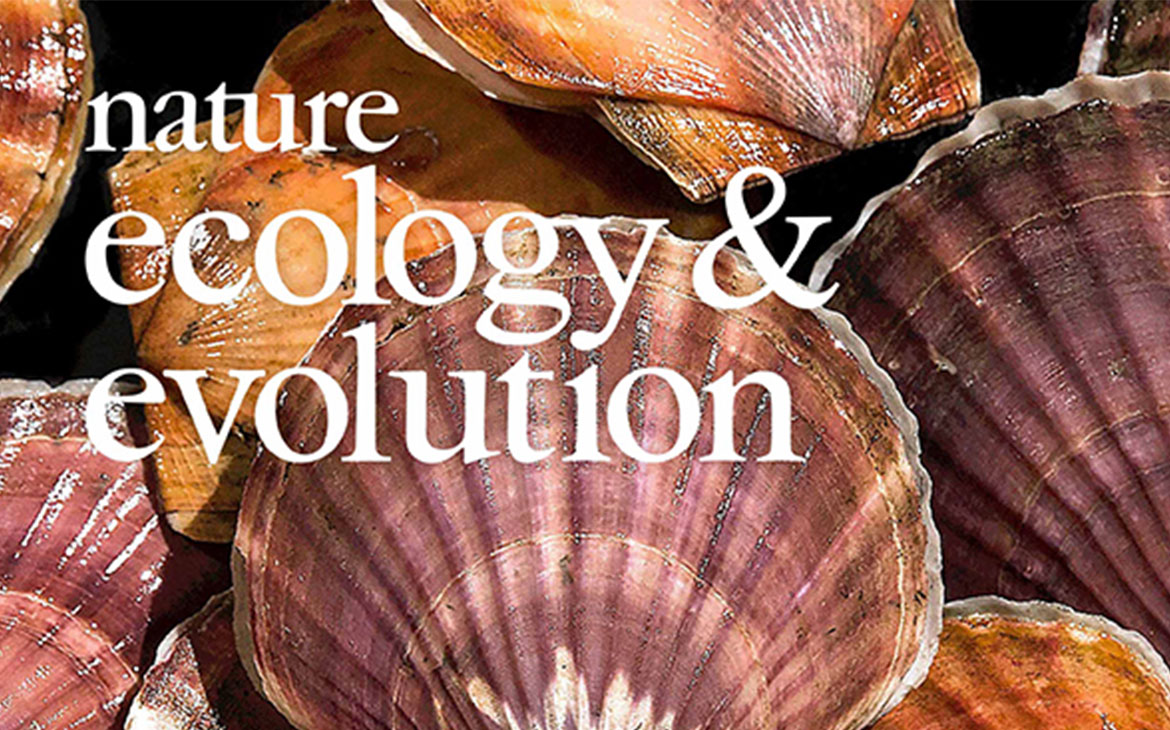Ximing Guo and a team led by Dr. Zhenmin Bao at Ocean University of China have sequenced the genomes of two scallops.
Their studies, which are recently published in Nature Ecology and Evolution and Nature Communications, provided insights into the evolution of early bilaterians and unique adaptations in bivalve molluscs. Their analyses show that scallops, as slow-evolving descendants from an early-Cambrian lineage, have a fossil-like genome with unprecedented preservation of ancestral bilaterian chromosomes.
Scallops and other molluscs show dynamic regulation of developmental genes in support of their diverse body-plan. Scallop’s advanced and fascinating non-cephalic eyes are supported by diverse opsins for enhanced spectral sensitivity. Dinoflagellates produce neurotoxin to suppress grazing by filter-feeder. But scallops have developed sophisticated molecules to tolerate and accumulate neurotoxins, and convert them to highly toxic forms for their own defense. These findings highlight genome’s skillfulness in meeting new challenges.
Wang, S., J. Zhang, W. Jiao, J. Li, X. Xun, Y. Sun, X. Guo, P. Huan, B. Dong, L. Zhang, X. Hu, X. Sun, J. Wang, C. Zhao, Y. Wang, D. Wang, X. Huang, R. Wang, J. Lv, Y. Li, Z. Zhang, B. Liu, W. Lu, Y. Hui, J. Liang, Z. Zhou, R. Hou, X. Li, Y. Liu, H. Li, X. Ning, Y. Lin, L. Zhao, Q. Xing, J. Dou, Y. Li, J. Mao, H. Guo, H. Dou, T. Li, C. Mu, W. Jiang, Q. Fu, X. Fu, Y. Miao, J. Liu, Q. Yu, R. Li, H. Liao, X. Li, Y. Kong, Z. Jiang, D. Chourrout, R. Li & Z. Bao. 2017. Scallop genome provides insights into evolution of bilaterian karyotype and development. Nature Ecology & Evolution, 1:0120. http://www.nature.com/articles/s41559-017-0120
Li, Y., X. Sun, X. Hu, X. Xun, J. Zhang, X. Guo, W. Jiao, L. Zhang, W. Liu, J. Wang, J. Li, Y. Sun, Y. Miao, X. Zhang, T. Cheng, G. Xu, X. Fu, Y. Wang, X. Yu, X. Huang, W. Lu, J. Lv, C. Mu, D. Wang, X. Li, Y. Xia, Y. Li, Z. Yang, F. Wang, L. Zhang, Q. Xing, H. Dou, X. Ning, J. Dou, Y. Li, D. Kong, Y. Liu, Z. Jiang, R. Li, S. Wang, and Z. Bao. 2017. Scallop genome reveals molecular adaptations to semi-sessile life and neurotoxins. Nature Communications, 8:1721. https://www.nature.com/articles/s41467-017-01927-0

